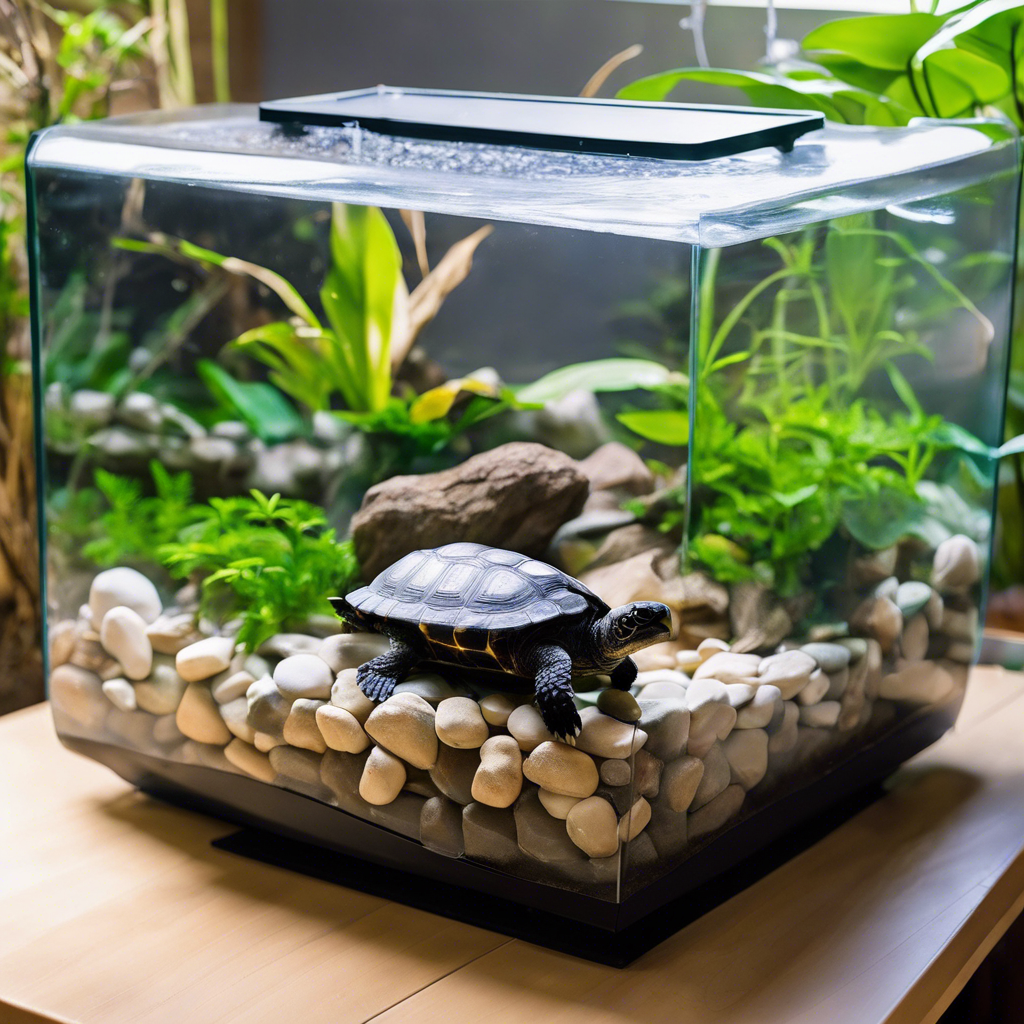Creating a suitable habitat for your turtle is crucial for its well-being. Here are some key considerations:
In this guide, we’ll delve deeper into each aspect of creating the perfect habitat for your turtle. Whether you’re a new turtle owner or looking to improve your current setup, these tips will help ensure your turtle’s environment is safe, comfortable, and conducive to their health and happiness.
- Tank Size: Choose a tank that provides ample space for your turtle to swim and explore. A general rule is 10 gallons of water per inch of shell length.
- Consider the shape of the tank as well. Turtles need both swimming space and a basking area, so a tank that is longer and wider is preferable to one that is tall and narrow. Additionally, ensure the tank has a secure lid to prevent your turtle from escaping and to keep other pets or children from accessing the tank.
- Water Quality: Maintain clean water with a good filtration system. Regularly test the water for pH and ammonia levels to ensure a healthy environment.It’s also important to perform regular water changes, ideally 25-50% of the tank volume weekly, to maintain water quality. Using a water conditioner can help remove chlorine and chloramines from tap water, making it safe for your turtle. Remember to monitor the water temperature, as it should be kept within the appropriate range for your turtle species.
- Basking Area: Provide a dry area where your turtle can bask under a heat lamp. This helps regulate their body temperature and aids in digestion.The basking area should be easily accessible for your turtle and large enough for them to fully stretch out. Use a heat lamp to maintain the appropriate temperature, typically between 85-95°F (29-35°C), depending on the species. A thermometer can help monitor the temperature to ensure it stays within the ideal range.
- Lighting: Use a UVB light to provide essential UV rays for your turtle’s shell and overall health. Replace the bulb every six months to ensure effectiveness.Position the UVB light above the basking area to mimic natural sunlight. This light is essential for calcium absorption and shell health. Ensure the light is on for 10-12 hours a day to simulate a natural day-night cycle.
- Substrate: Choose a substrate that is easy to clean and safe for your turtle. Avoid small gravel that can be ingested.Consider using river rocks or large gravel that cannot be swallowed. Sand can also be used, but it requires regular cleaning to prevent bacterial buildup. Avoid using substrates with sharp edges that could injure your turtle.
By setting up the right habitat, you can create a comfortable and healthy environment for your turtle.
